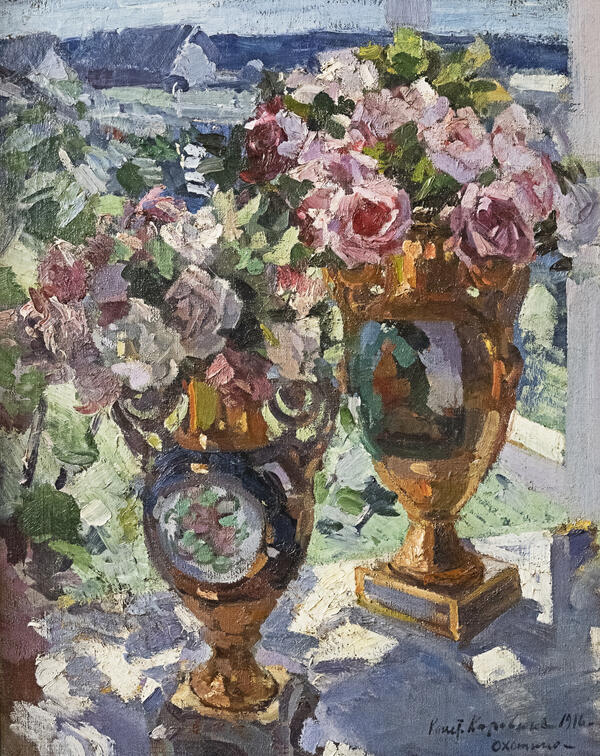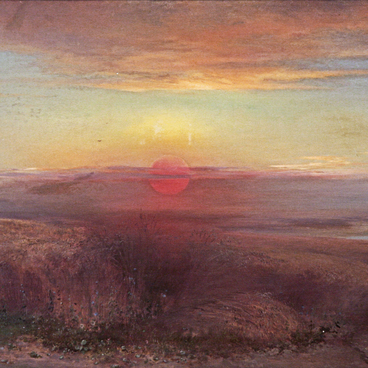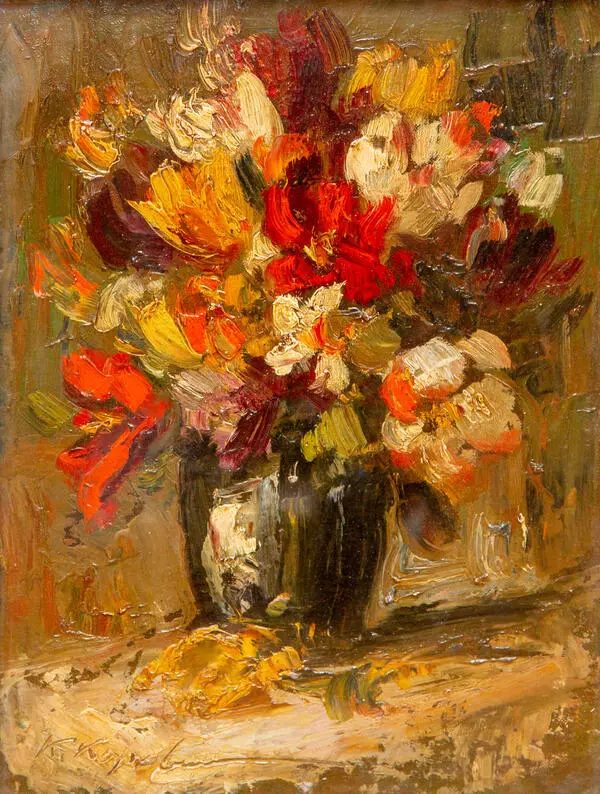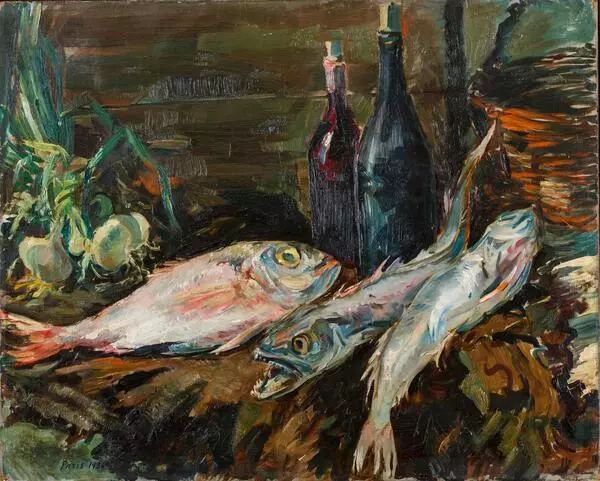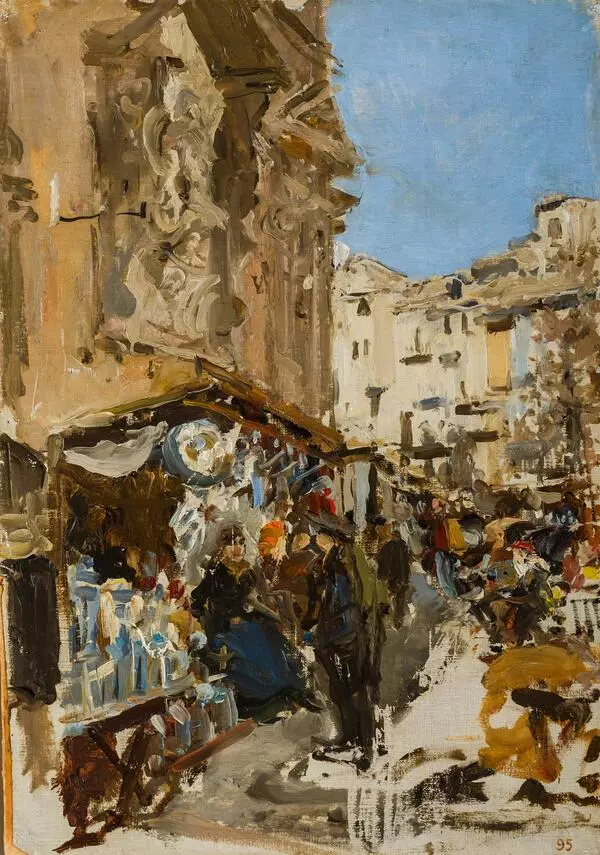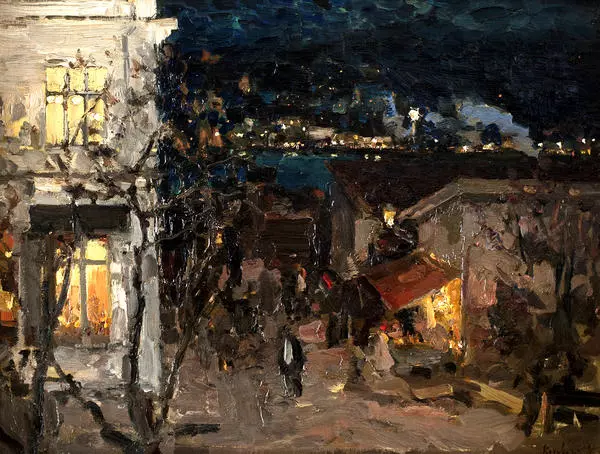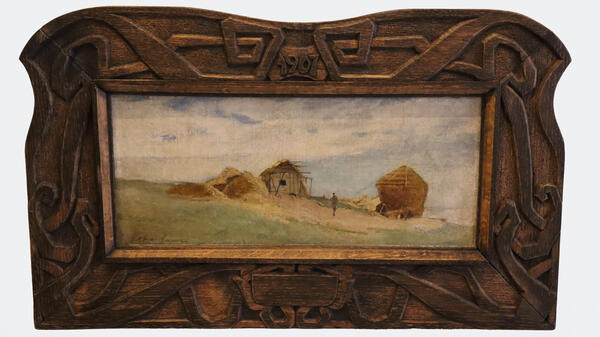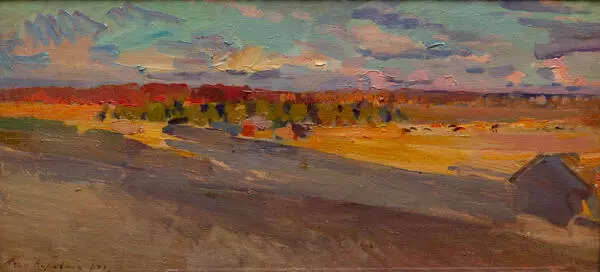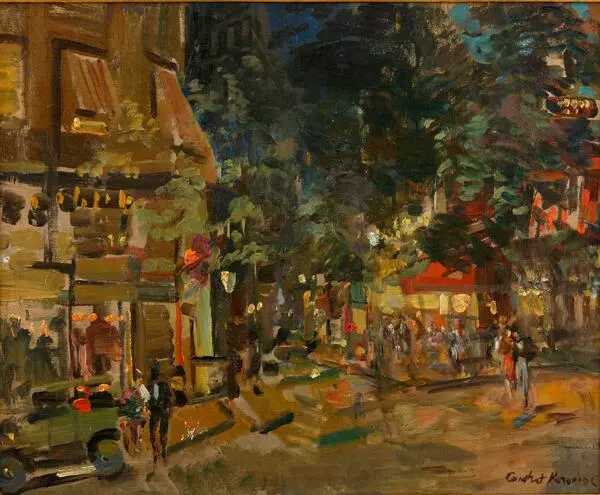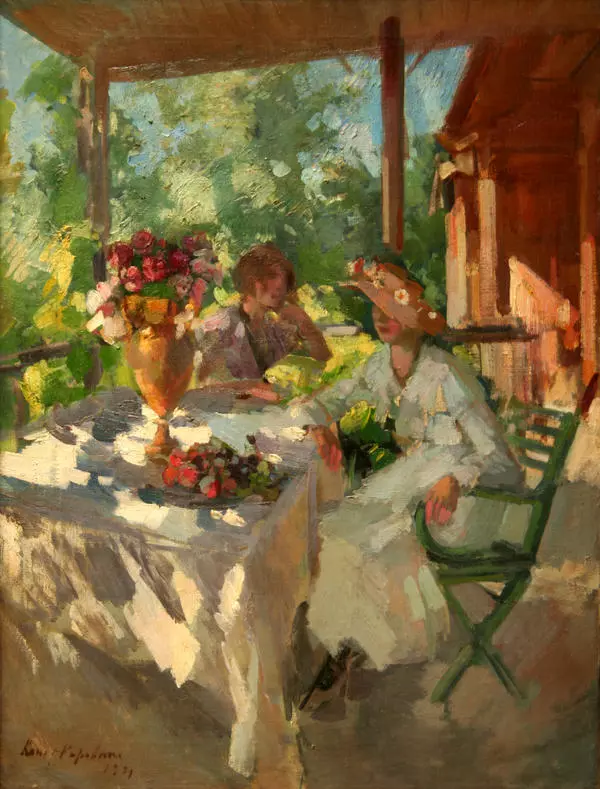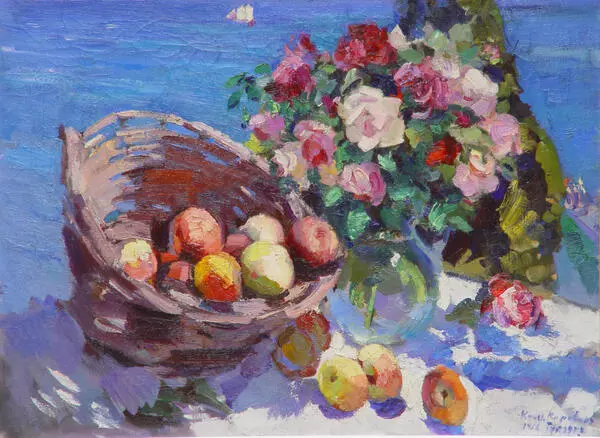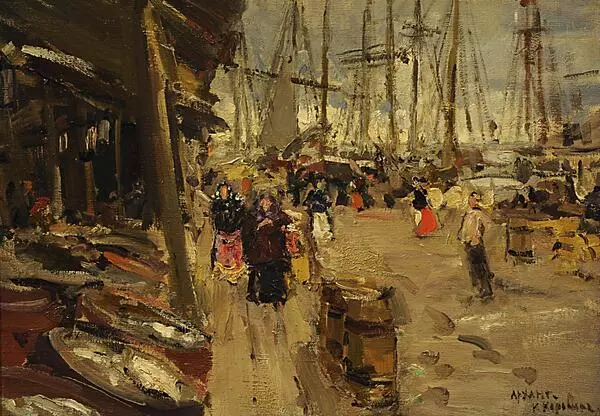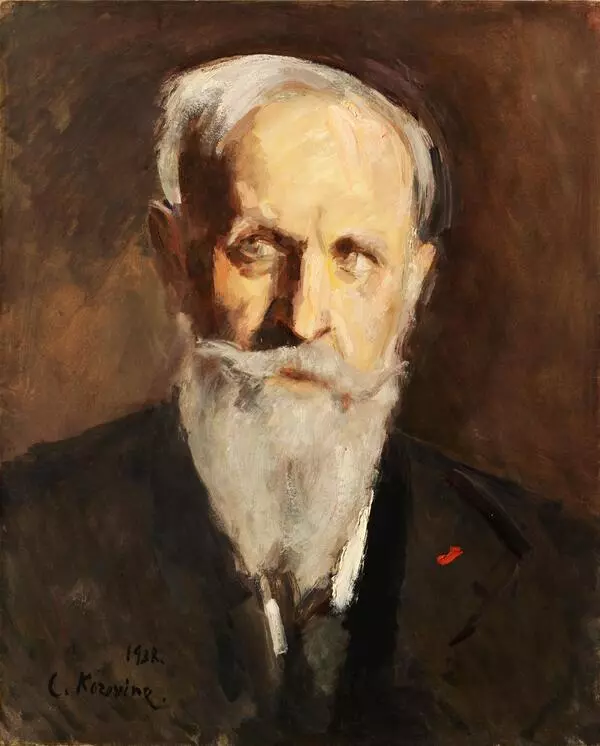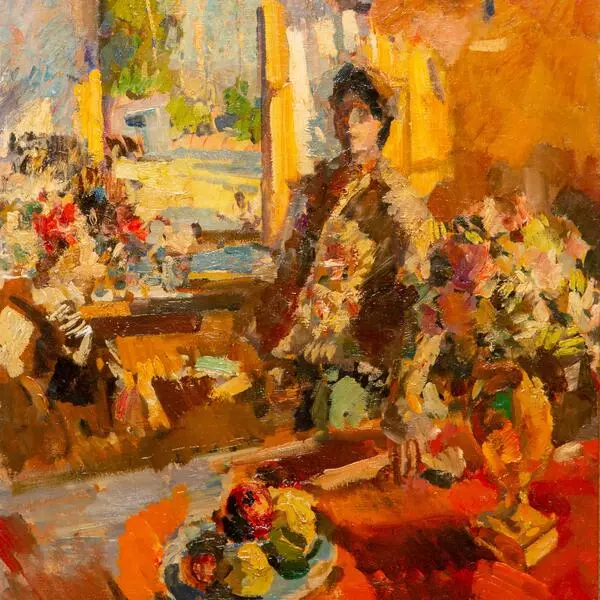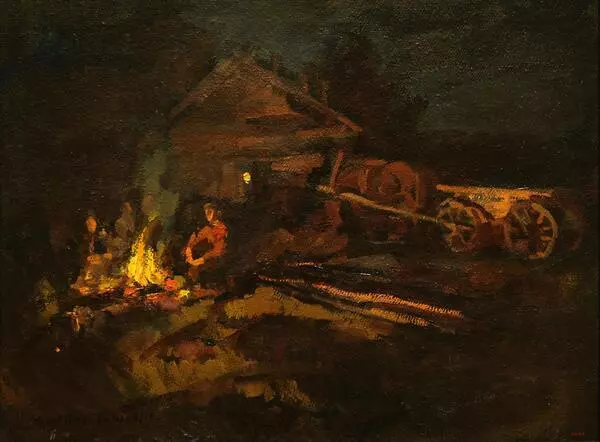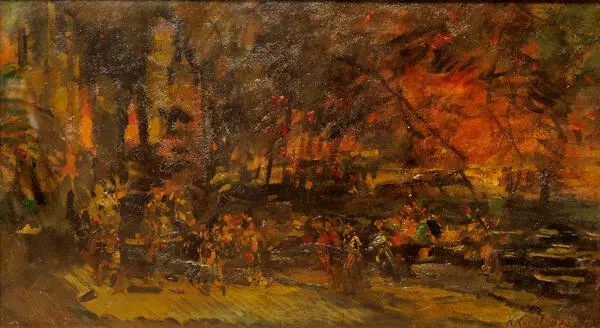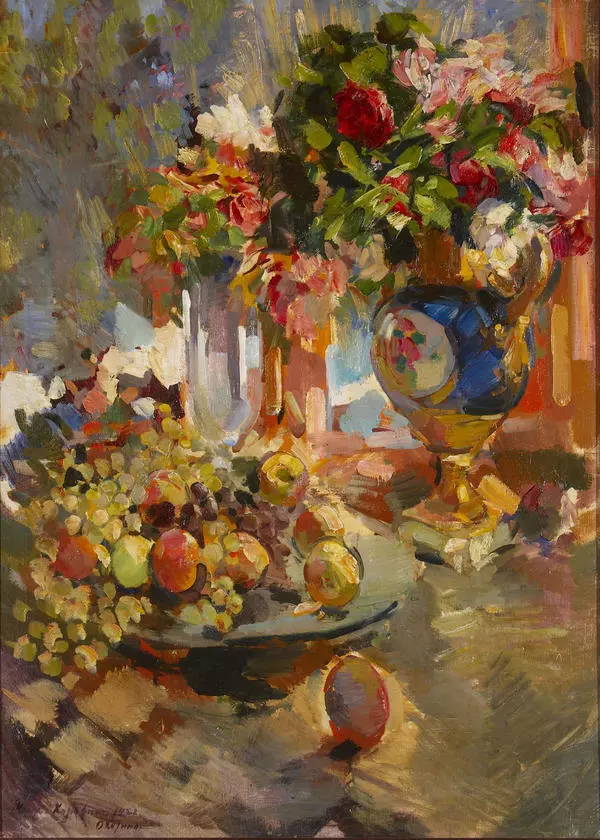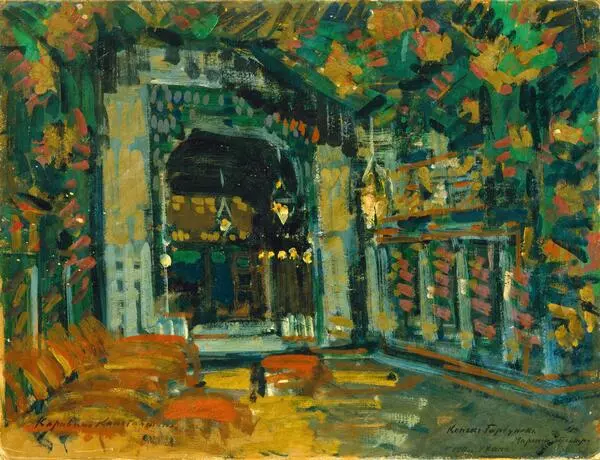At the age of 14, Korovin entered the Moscow School of Painting, Sculpture and Architecture, but soon joined the landscape painting class of Alexey Savrasov. The landscape master taught Korovin to convey his feelings using various pictorial means. Later, Korovin said that one cannot paint a landscape just because it is beautiful, but that it must contain a “story of the human soul”.
In the 1880s, the artist became interested in an art movement that was new for Russia — Impressionism. Korovin’s first work in this style was ‘Portrait of a Chorus Girl’, for which his contemporaries nicknamed him ‘the first swallow of Russian impressionism’. And in the 1910s, Korovin focused on still lifes, which he also painted in the style of the Impressionists.
The collection of the Rostov Museum includes nine paintings and three graphic works of the artist, which date back to 1900–1910. All of them are painted in a similar style, since during this period new trends appeared in Korovin’s work — conspicuous decorative color effects and a composition that would look sketchy.
Korovin painted the still life “Roses” in Okhotino, an estate near Pereslavl-Zalessky, not far from Moscow. The subject matter of the painting is simple: bouquets of flowers in heavy vases stand on the windowsill of an open window, behind which you can see the scenery typical for Central Russia.
The artist creates a harmonious and clear image due to the abundance of light and air, as well as the detailed elaboration of the objects, making them almost tangible.
In this painting Korovin also uses the law of color contrasts. No color is independent in the picture — each color is set off and reinforced by neighboring colors. Thanks to this, all the objects in the painting acquire volume and depth.

